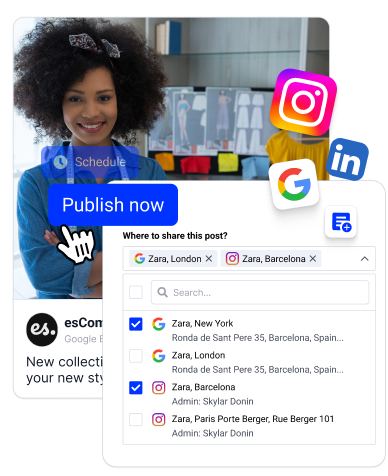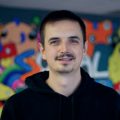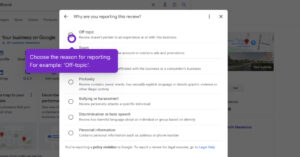Tracking Local SEO metrics is crucial for new and budding businesses nowadays, as they provide insights into website performance and guide your brand’s growth strategies.
By regularly monitoring your key SEO metrics, you can make data-driven decisions that help you optimize your online presence and boost your profits.
However, while some metrics are essential to check regularly, others are still very useful, and you should glance at them now and then.
That said, below, I cover the most important metrics for SEO you should be looking at right away if you don’t want to fall behind your competitors!
What does ‘SEO metrics’ mean?
In short, search engine optimization metrics are data points used to measure the performance of a website in search engines, and as such, they help evaluate the effectiveness of the SEO strategies you have implemented.
‘SEO Metrics’ definition
While every SEO metric provides insights into your website’s visibility and user engagement, not all will inform your strategies.
Most importantly, look at organic search traffic, keyword rankings, backlinks, and click-through rates. Each highlights an important SEO area.
Keep on reading as we cover most of the metrics below:
Why should you track metrics for SEO regularly?
Tracking SEO metrics regularly is vital for your business for several reasons:
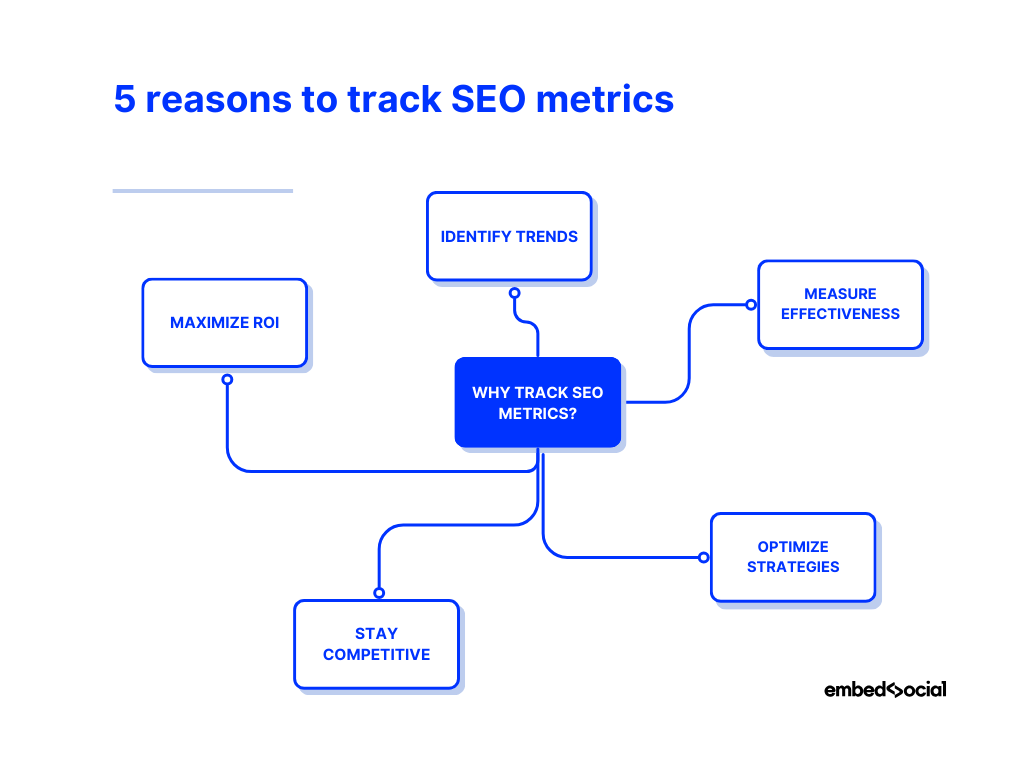
- Identify trends—regular tracking helps you spot trends in your website’s performance, which allows for timely adjustments to your SEO strategies;
- Measure effectiveness—it enables you to measure the effectiveness of your SEO efforts, which ensures your tactics are driving the desired results;
- Optimize strategies—by monitoring metrics, you can identify areas needing improvement, which leads to a continuous optimization of your SEO strategies;
- Stay competitive—regular tracking keeps you aware of your competitors’ performance, which helps you stay competitive in your industry;
- Maximize ROI—finally, tracking metrics helps ensure your resources are being used effectively so you maximize your return on investment (ROI).
As you can see, regular SEO monitoring is crucial for maintaining and improving your website’s performance so that you edge your competition. After all, winning the online marketing battle is how you gain and retain customers in today’s digital age.
Once you master these metrics, you can move on to more advanced methods to boost your local SEO visibility, such as implementing a Google aggregated star rating!
Basic SEO metrics to track regularly
When looking for SEO metrics to track, you should always start with the following:
1. Organic traffic
What it is and why it matters:
Organic traffic refers to visitors who find your website through search engine results. It measures the effectiveness of your SEO efforts and overall visibility.
Useful for:
Tracking overall website visibility and measuring the impact of SEO campaigns.
How to track it and tips for improvement:
Use tools like Google Analytics. Improve it by optimizing content with relevant keywords and enhancing site structure.
2. Keyword rankings
What it is and why it matters:
Keyword rankings show how well your site ranks for specific keywords in search engines. High rankings indicate good SEO performance.
Useful for:
Identifying high-performing keywords and assessing SEO strategy effectiveness.
How to track it and tips for improvement:
Track with tools like Ahrefs or SEMrush. Enhance rankings by targeting relevant keywords and updating content.
3. Backlinks
What it is and why it matters:
Backlinks are links from referring domains to your site. They play a crucial role in SEO, enhancing credibility and authority.
Useful for:
Building domain authority and improving search engine rankings.
How to track it and tips for improvement:
Use tools like Ahrefs and Moz for analysis. Improve by acquiring high-quality backlinks through outreach and content collaboration with referring domains.
4. Click-through rate (CTR)
What it is and why it matters:
CTR is the ratio of users who click on your link to those who see it. It indicates the effectiveness of your meta descriptions and titles.
Useful for:
Evaluating the appeal of your search snippets and improving traffic.
How to track it and tips for improvement:
Monitor with Google Search Console. Improve by crafting compelling meta descriptions and titles.
5. Bounce rate
What it is and why it matters:
Bounce rate is the percentage of visitors who leave your site after viewing only one page. It reflects user engagement and site quality.
Useful for:
Assessing user experience and identifying areas for improvement.
How to track it and tips for improvement:
Track with Google Analytics. Reduce bounce rate by improving site content and navigation.
6. Conversion rate
What it is and why it matters:
Conversion rate is the percentage of visitors who complete a desired action. It measures the effectiveness of your site in driving actions.
Useful for:
Evaluating the success of your marketing efforts and website functionality.
How to track it and tips for improvement:
Use tools like Google Analytics. Improve by optimizing landing pages and calls-to-action.
Advanced enterprise SEO metrics
In addition to the above, enterprises should consider other advanced metrics:
7. Domain authority (DA) and page authority (PA)
What it is and why it matters:
Domain authority (DA) and page authority (PA) are metrics developed by Moz that predict how well a website or page will rank in search engine results. Higher scores indicate stronger ranking potential.
Useful for:
Evaluating the overall strength of a website and its individual pages. Comparing your site’s authority against competitors.
How to track it and tips for improvement:
Use Moz’s Link Explorer or DA/DR checker by Editorial.Link to measure DA and PA. Improve these metrics by acquiring high-quality backlinks and creating valuable content.
8. Crawl errors
What it is and why it matters:
Crawl errors occur when a search engine tries to reach a page on your site but fails. These errors can prevent pages from being indexed properly.
Useful for:
Identifying issues that hinder search engine indexing. Ensuring all important pages are accessible to search engines.
How to track it and tips for improvement:
Monitor crawl errors with Google Search Console. Fix errors by updating or redirecting broken links and ensuring a clean sitemap.
9. Mobile usability
What it is and why it matters:
Mobile usability refers to how well your website performs on mobile devices. Good mobile usability is crucial as more users access the web via mobile.
Useful for:
Enhancing user experience for mobile visitors. Improving mobile search rankings.
How to track it and improvement tips:
Use Google’s Mobile-Friendly Test and the Mobile Usability report in Google Search Console. Improve by implementing responsive design and optimizing page load speed for mobile devices.
SEO visibility search metrics
For enterprises aiming to improve their overall search performance, focusing on visibility and impressions is key:
10. SEO visibility
What it is and why it matters:
SEO visibility measures how often your site appears in search engine results. It is a metric that reflects your site’s overall search presence.
Useful for:
Assessing the impact of SEO strategies. Understanding your site’s reach and presence in search results.
How to track it and tips for improvement:
Monitor SEO visibility with tools like SEMrush or Ahrefs. Improve by optimizing content, targeting relevant keywords, and building high-quality backlinks.
11. Search impressions
What it is and why it matters:
Search impressions are the number of times your site appears in search results. Stronger impressions indicate better visibility in search engines.
Useful for:
Measuring the reach of your website. Identifying potential for increased traffic.
How to track it and tips for improvement:
Track impressions with Google Search Console. Increase impressions by optimizing for relevant keywords and improving site content.
Additional weekly SEO metrics to measure
Lastly, there are other SEO metrics you need to follow each week.
Monitoring organic traffic trends helps you understand fluctuations in the number of visitors finding your site through search engines. This is essential for assessing the effectiveness of your ongoing SEO strategies and identifying patterns in traffic. You can use your Google Analytics data to monitor these trends.
Keyword ranking fluctuations are another important metric, showing changes in your site’s position for specific keywords over time. This indicates how well your keyword strategies are performing. By monitoring these rankings with tools like SEMrush or Ahrefs, you can identify which keywords are gaining or losing ground and adjust your efforts accordingly.
Backlink growth tracks the increase in links from other websites to yours, which plays a key role in boosting domain authority and search engine rankings. If you’re running a website or working with a SaaS link-building agency, regularly evaluating your backlink profile using tools like Ahrefs or Moz is essential. Strengthen your link-building strategy by creating high-value content and investing in smart outreach efforts to earn quality links.
On-page SEO metrics, such as title tags, meta descriptions, header tags, and content quality, are essential for optimizing individual pages for search engines. Regularly updating these elements based on SEO best practices improves user experience and search rankings. Tools like Yoast SEO can help analyze and enhance on-page SEO for every page.
Read more about how Google reviews impact your SEO in 2024!
What’s the single most crucial metric for local SEO: 15 SEO experts’ insights
Wondering what the experts have to say about what is the most important local SEO metric you need to track? Here are the opinions of 15 industry leaders:
- Value share of local voice metric
- Track Google My Business engagement
- Monitor local pack rankings
- Local pack ranking: A key metric
- Improve Google Business Profile rankings
- Leads generated per week
- Local keyword rankings impact
- Local search visibility via GMB
- Review count and content analysis
- Keyword matching for niche products
- Google Maps ranking average
- Monthly Google My Business views
- Detailed call tracking and analysis
- Focus on cost per conversion
- Organic traffic to landing pages
For a summary and explanation, feel free to refer to this table:
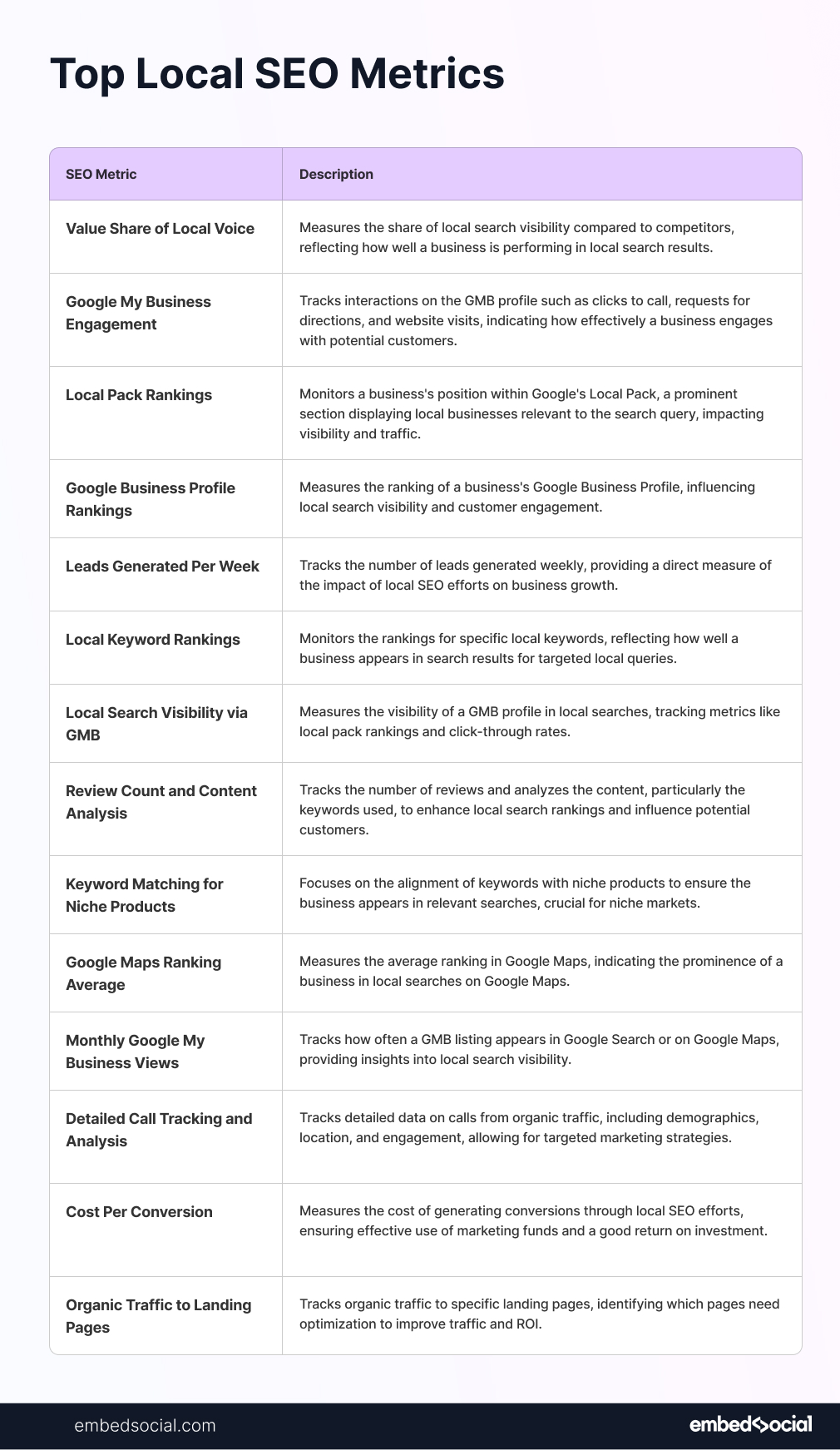
1. Value share of local voice metric
Users from local searches demonstrate a high intent to purchase or visit a business. However, attribution is often difficult, so I believe local SEO metrics are better aligned with visibility, and for this reason, we love Share of Local Voice (SoLV). Clients always value the metric, particularly when benchmarking the result against their direct competition.
Quentin Aisbett, SEO & SEM Strategist, Searcht
2. Track Google My Business engagement
Probably the most important local SEO metric I track is the Google My Business (GMB) engagement rate, which includes clicks to call, requests for directions, and website visits from the GMB profile. Tracking these allows me to know how a business engages with potential customers who find it in local search results.
For example, with one of our restaurant clients in the local market, we found that although the GMB profile was receiving many views, it had relatively very few actions. We started optimization by beautifying their GMB profile through additional photos, descriptions of most services/features, and posting regularly.
It then saw a considerable boost in engagement, which clearly led to increased footfall and a definite spike in reservations correlating with direct increases in their revenues. It has been great to be able to measure and improve engagement on GMB in order to show our real value to clients from the work in local SEO.
Andrii Latenko, SEO Expert & LinkBuilder, HARO Links SEO Agency
3. Monitor local pack rankings
I believe the most important local SEO metric to track is Local Pack Rankings. This metric is crucial because it directly impacts a business’s visibility in Google’s local search results, which can significantly influence traffic and conversions.
Local Pack Rankings refer to a business’s position within the Google Local Pack (also known as the Map Pack or 3-Pack), which appears at the top of search results for queries with local intent. This prominent placement makes it incredibly valuable for local businesses, as it’s often the first thing users see when searching for local products or services.
Here’s an example of how tracking and improving Local Pack Rankings has benefited one of my clients:
I worked with a small, family-owned Italian restaurant in a competitive urban area. Initially, they weren’t appearing in the Local Pack for relevant searches like “Italian restaurant near me” or “best pasta in [city name].”
We implemented a comprehensive local SEO strategy, focusing on optimizing their Google Business Profile, improving their website’s local relevance, and encouraging customer reviews.
Over six months, we tracked their Local Pack Rankings using tools like LocalFalcon, which allows for granular tracking of rankings across different locations within a city. We saw steady improvement, and eventually, the restaurant started appearing in the Local Pack for their target keywords.
The impact was significant:
- Increased visibility: The restaurant now appeared prominently in local searches, exposing it to a much larger audience.
- More website traffic: Click-through rates from the Local Pack to their website increased by 150% compared to their previous organic search listings.
- Higher foot traffic: The restaurant reported a 30% increase in walk-in customers who mentioned finding them through Google searches.
- Improved conversion rate: Phone calls and online reservations increased by 40%, directly attributable to their improved Local Pack presence.
- Revenue growth: Overall revenue grew by 25% in the six months following their consistent appearance in the Local Pack.
This example demonstrates the power of tracking and improving Local Pack Rankings. It’s not just about visibility; it translates directly into tangible business results. By focusing on this metric, we were able to significantly boost the restaurant’s online presence and, more importantly, its bottom line.
Sara Borghi, SEO Consultant & Senior SEO Strategist at Oncrawl, Sara Borghi
4. Local pack ranking: A key metric
For our agency, one of the most critical local SEO metrics that we track is the “Local Pack” or “Map Pack” ranking. This refers to the prominent section of Google’s search results that displays a map alongside a list of three local businesses relevant to the search query. Appearing in this Local Pack significantly boosts visibility and traffic to a business, making it a key metric for measuring local SEO success.
Factors influencing Local Pack rankings include Google My Business (GMB) optimization, local citations, reviews, and the relevance and proximity of the business to the searcher’s location. Monitoring and improving Local Pack rankings can greatly enhance a business’s local search presence and customer acquisition efforts.
Melysha Acharya, SEO, Really Affordable SEO
5. Improve Google Business Profile rankings
One of the most important local SEO metrics I track is the Google Business Profile (GBP) rankings. This metric is crucial because it directly influences local search visibility and customer engagement. For instance, I worked with a local bakery in a tourist area in Greece that was struggling to attract foot traffic despite having excellent reviews. By focusing on improving their GBP rankings, we managed to boost their visibility in local searches—people searching for their products while visiting or passing through that area.
We achieved this by optimizing their profile with accurate business information, high-quality images, and regular posts. Additionally, we encouraged satisfied customers to leave reviews using a Google Reviews plate with a QR code in-store, which significantly enhanced their profile’s credibility. As a result, their ranking significantly improved to one of the top three positions for key local search terms. This visibility increase led to a 40% rise in foot traffic and a notable uptick in sales.
This example highlights how critical GBP rankings are for local businesses. By consistently monitoring and optimizing this metric, businesses can improve their local presence and attract more customers.
George Papatheodorou, Digital Marketing Consultant, George Papatheodorou
6. Leads generated per week
Leads generated per week. At the end of the day, business owners aren’t just looking to rank higher in search results; they want to create real, tangible results for their business. There are a lot of touchpoints between ranking higher and making a sale, and the buyer’s journey is not always linear, but tracking leads per week is a good gut check on the health of your SEO.
Amanda Hamilton, Website & SEO Specialist, Anchor ‹A› Digital Design Co.
7. Local keyword rankings impact
One crucial local SEO metric we track is local keyword rankings—specifically, how well your business ranks for relevant search terms within your area.
For example, with our cleaning business client, we focused on optimizing for terms like “best office cleaning in [City]” and “affordable house cleaning near me.” By creating localized content and getting listed in local directories, we saw their keyword rankings improve dramatically. This led to a 40% increase in organic traffic and a noticeable uptick in inquiries and bookings, directly correlating to higher visibility for targeted local searches.
Zeeshan Siddiqui, Founder, SEO for Cleaning Services
8. Local search visibility via GMB
The most important local SEO metric I track is the Google My Business (GMB) profile’s local search visibility, specifically tracking metrics like local pack rankings and click-through rates (CTR). For example, by optimizing a client’s GMB profile and monitoring these metrics, we identified a significant increase in local pack appearances and CTR, which led to a 30% increase in foot traffic and a 20% boost in local sales over three months.
Evgen Kushnirchuk, Marketer, SEO Expert, and CEO of HireDevelopers.biz
9. Review count and content analysis
The most important local SEO metric that we track at SmartSites is the review count and review content, particularly the keywords used within those reviews. Reviews not only influence potential customers but also play a crucial role in local search rankings.
For example, we worked with a local HVAC company to enhance their local SEO. By encouraging satisfied customers to leave detailed reviews mentioning specific services and keywords, such as “air conditioning repair” and “heating installation,” we significantly boosted their visibility on search engines. The results demonstrated the powerful impact that focusing on review metrics can have on improving local search rankings and driving business growth.
Michael Melen, Co-Founder, SmartSites
10. Keyword matching for niche products
SEO is an important part of any business’s marketing plan, particularly if you have an e-commerce business. Without effective SEO, you run the risk of your brand or product never being discovered by the consumer who is looking for that very thing. Matching on specific keywords is one of the most important SEO metrics to track.
For us, keywords are the most solid SEO metric because of the nature of our business. When your main product is more niche, you have to use precisely the right combination of keywords. These should be words that consumers commonly use when searching for that specific type of product. Not giving careful thought to your keyword planning may result in potential customers scrolling right past you to a competitor’s site.
It’s important to understand also that SEO changes. It is more of a fluid concept rather than a fixed rule. One thing that I have found successful is turning to social media to search for trending keywords. Platforms like TikTok have been responsible for skyrocketing sales of all kinds of brands and products, so researching what’s trending is helpful. Finding those trending words and incorporating them into our SEO has been a successful marketing strategy for us.
Olivar Brandrup, Director of SEO, Neurogan
11. Google Maps ranking average
As the founder of a local SEO firm, there is no close second metric to a local business’s Google Maps ranking average. Roughly 90% of searchers for local businesses use Google to find them, and roughly 50% of those click one of the top three maps rankings. The difference between being #10 and #1 is well over 10 times the amount of calls, clicks, or shop visits you’ll get in a month.
A couple of leading indicators of a successful Google Maps ranking average that businesses can control starting today are: having at least one topical and helpful post per week on your Google Business Profile, and getting at least one customer review each week. There’s much more to this, but if you just start with these two, you’ll be ahead of 90% of Maps listings. By focusing on the leading indicators instead of the lagging indicator of ranking, you can stay motivated and eventually hit your end goal of a high local Google ranking.
Elliott Kosmicki, Founder & President, Major Impact
12. Monthly Google My Business views
The most important metric for local SEO is your monthly Google My Business (GMB) views, which shows how often your listing appeared in a Google Search or on Google Maps. This data is available through GMB Insights and can be pulled into a Looker Studio dashboard.
Our agency specializes in local SEO for multi-store brands. Using dashboards that track the number of GMB views seen by each store lets us see which locations are doing well and which ones need attention. We can also track growth in GMB views over time and show the results of our work.
Bottom line: GMB views are to local SEO what website visits are to standard SEO. You track it to see if you’re growing.
It always surprises me how few SEOs are aware of this metric or know how to track it for multiple stores.
Tom Dahm, President, BridgePose Digital LLC
13. Detailed call tracking and analysis
We like to track calls in a very detailed way. We use a tracking number for organic traffic, which a lot of people use. However, we also track clicks to those call-tracking numbers in Google Analytics, and we tag those sessions as “conversion” in Microsoft Clarity. This allows us to segment who is calling, what their demographics are, location, time of day, track website engagement, and even view their entire browser session.
We do this for other conversions as well. However, I really like this type of tracking for local as you can start to use data from call tracking in things like call-only ads for “hot zones,” physical locations you receive a lot of calls from, or services that trigger a lot of phone calls.
Chris Castillo, Owner, Propel Digital Marketing
14. Focus on cost per conversion
The most crucial statistic seems to be the cost per conversion (CPC). Companies cannot determine the effectiveness of their local SEO efforts without knowing the CPC. This indicator ensures a lucrative return on investment in local SEO and effective marketing fund usage. If a certain local SEO campaign or keyword approach generates conversions at a lower cost, you may invest more money in it.
On the other hand, a high CPC may indicate the need to change strategy. This enables businesses to select only high-quality keywords while eliminating or changing ineffective ones, focusing on local SEO efforts.
Billy Parker, CEO, Founder, Gift Delivery
15. Organic traffic to landing pages
Our SEO agency tracks our overall organic traffic and organic traffic to landing pages. They use this information to see which pages and blogs are experiencing traffic decline year over year (YoY). From here, they determine a plan to increase traffic back to these landing pages, such as adding helpful content, driving links to them, or optimizing for keywords.
Our traffic usually goes back up after they address the issues on these pages. It is important for us to see this because it shows us that the work they are doing is increasing our organic search presence and encouraging ROI for our team.
Bill Rudman, Director, The Musical Theater Project
Tools for SEO monitoring and tracking
Monitoring and tracking SEO metrics are crucial for small and medium-sized businesses (SMBs) to stay competitive. The following tools offer valuable insights and features tailored to help SMBs optimize their SEO strategies effectively.
1. Google Analytics
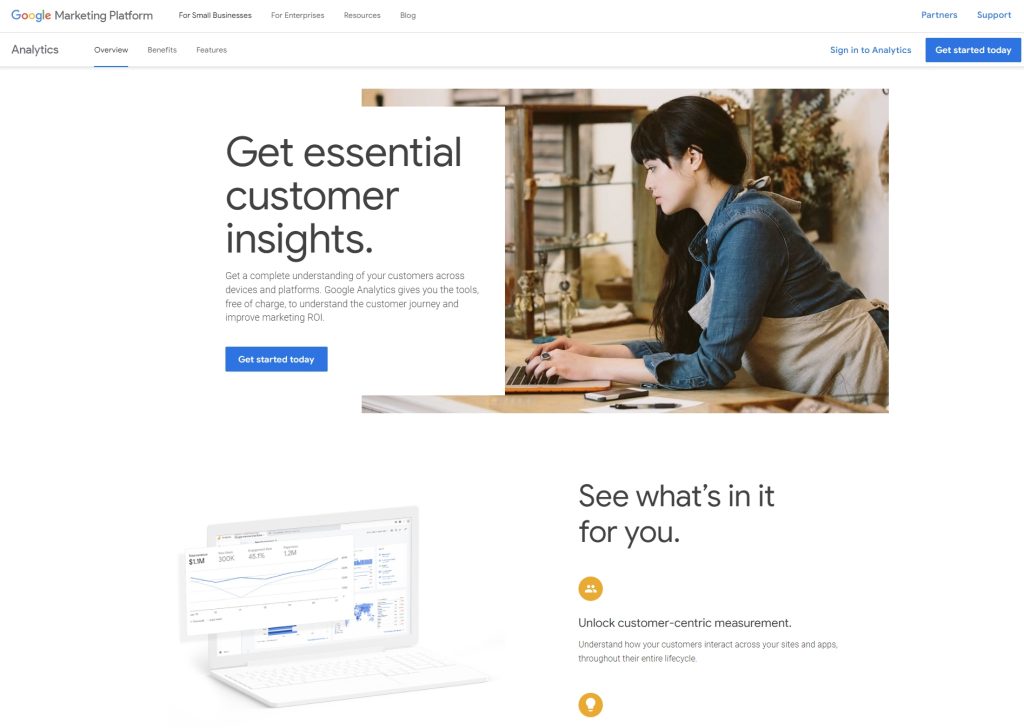
Google Analytics provides comprehensive data on website traffic and user behavior. It helps SMBs understand which pages are performing well, track conversion goals, and identify traffic sources. Thus, the platform’s detailed reporting and real-time data capabilities enable businesses to make informed decisions and optimize their online presence.
One of Google Analytics’s standout features is its ability to segment audiences, which allows you to better understand your customers. Analyzing different user segments allows you to tailor your strategies to target specific groups more effectively.
Google Analytics also integrates with other Google products, such as Ads, enabling you to track the performance of your ad campaigns and adjust them as needed.
Lastly, the platform’s customizable dashboards and reports make it easy to monitor key metrics at a glance and access all of the platform’s features with a single click.
Pricing: It is free for standard use, and a premium version for enterprises (Google Analytics 360) is available with pricing upon request.
2. Ahrefs
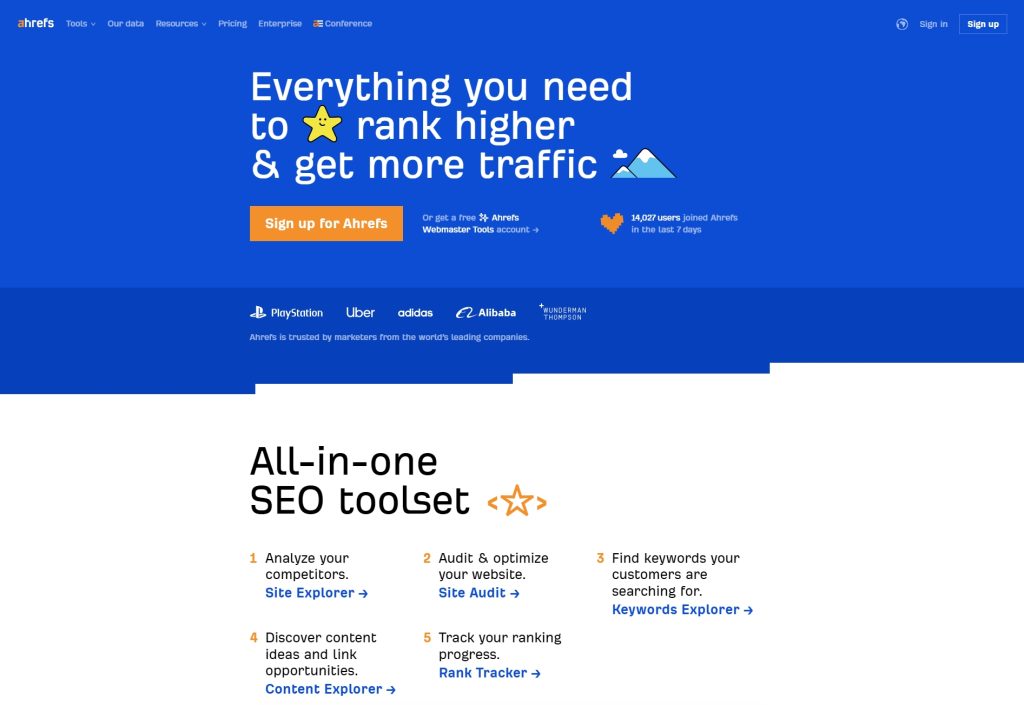
Ahrefs is known for its robust backlink analysis and keyword research features. SMBs can benefit from its site audit tool, which identifies SEO issues and suggests improvements. Also, you get competitive analysis, allowing you to track your competitors’ performance and uncover opportunities for growth at any time.
The platform’s ‘Content Explorer’ feature helps you discover popular content in your industry, providing inspiration and insights into what resonates with your audience. By understanding the types of content that perform well, you can then create more engaging content.
Ahrefs’s ‘Rank Tracker’ monitors your keyword rankings over time and compares them to competitors. This feature is crucial for tracking the effectiveness of your SEO strategies and making necessary adjustments to improve rankings.
Pricing: The Lite plan, suitable for small businesses, starts at $129 per month, and the Advanced plan, at $449/month or $14,990/year, is for enterprises.
3. Semrush

Like Ahrefs, Semrush offers tools for keyword research, site audits, and competitor analysis. Its user-friendly interface and detailed reports make it easy for SMBs to monitor their SEO efforts. Semrush’s position tracking and organic traffic insights will help you refine your strategies and improve your search engine rankings.
One of Semrush’s key features is its ‘Site Audit’ tool, which scans websites for technical issues that could affect SEO performance. By identifying and fixing these issues, you can ensure your site is fully optimized for search engines.
The platform also comes with a ‘Keyword Magic Tool’, which helps you find the best keywords to target for your SEO campaigns. This tool provides data on search volume, keyword difficulty, and more, enabling you to choose effective keywords.
Pricing: The Pro plan, ideal for freelancers and startups, starts at $139.95 per month and can be extended to $499 per month for the Business plan.
4. Moz

Like the other two platforms here, Moz provides essential SEO tools such as keyword tracking, site audits, and backlink analysis. Its unique MozBar browser extension offers on-the-go SEO insights. Plus, Moz’s comprehensive training resources and community support are particularly beneficial for SMBs looking to enhance their SEO knowledge and skills.
The Moz Pro dashboard offers a clear overview of your SEO performance, making tracking your progress easy. With detailed reports and insights, you can identify areas for improvement and take action to boost your search engine rankings.
Furthermore, Moz’s Link Explorer tool allows you to analyze your backlink profile and identify high-quality link-building opportunities. Improving your backlink profile can enhance your domain authority and search engine rankings.
Pricing: The Starter plan starts at $49 per month, catering to SMBs and professionals. Three other plans are available, with the large plan ($299/mo) targeting large businesses.
5. EmbedSocial – SEO Schema Codes and search of reviews keywords
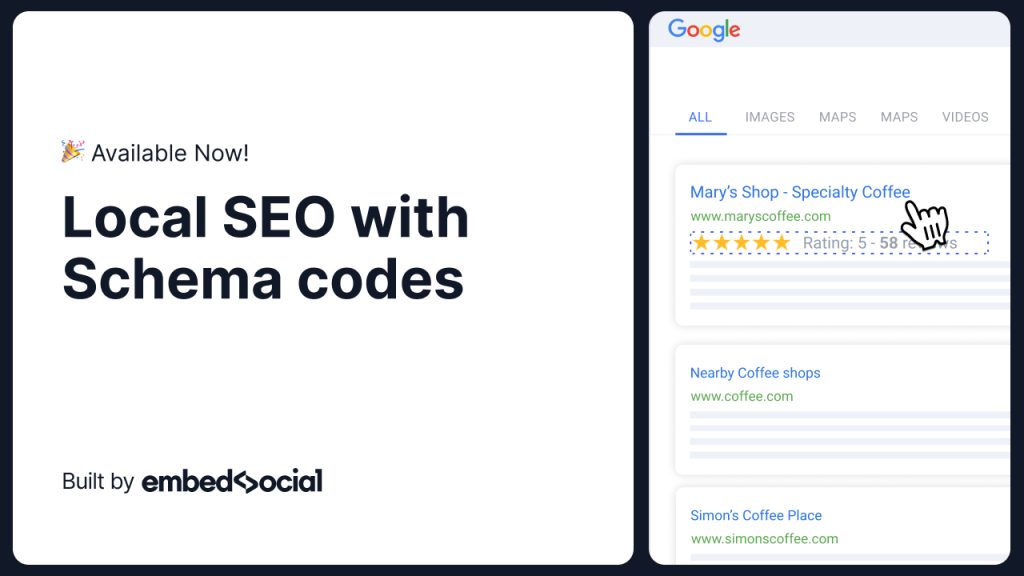
EmbedSocial is a broad platform integrated with the Google business profile API. It allows users to pull all their Google reviews, search Google reviews, tag them, and organize them for better insights.
The platform provides two main functionalities to help improve Local SEO metrics:
- Google autoresponder – Respond with an autoresponder to each Google review in order to increase average response time, which directly impacts the ranking and improves Local SEO.
- Google schema code – EmbedSocial provides a schema code plus a Google reviews widget that, when embedded together on a product or service page, will show the star snippet. This snippet directly impacts visibility and, therefore, the increase of clickthrough rates and traffic to your website.
More local SEO metrics are coming to users on the platform, so for any help, feel free to reach out to the team in the right-hand bottom chat on the website.
Conclusion: Boost your SEO efforts to rank in search engines!
At the end of the day, what weekly SEO metrics should you measure? You must track keyword rankings, organic traffic, and bounce and click-through rates.
After all, analyzing SEO data and metrics is important if you want to ensure that your efforts work and will help you climb the search engine results pages.
Whether you’re a small business or an enterprise, SEO tracking is an activity you must do regularly to grow your brand, improve user experience, and maximize ROI.
There’s nothing complicated about it! Especially if you use the tools above, which often give you most of what you need to grow your brand. Then, once you get on the right track, you’ll build a strong Google Business Profile in no time at all!
To do that, you should look into the best online reputation management strategies you need to implement immediately, such as signing up with a UGC platform with a direct connection to Google’s API, such as EmbedSocial!
FAQs
What are metrics in SEO?
SEO metrics are quantifiable measurements used to track the performance and effectiveness of SEO efforts. These metrics provide insights into various aspects, such as traffic, keyword rankings, and user engagement, helping businesses understand how well their SEO strategies work.
Why are SEO metrics important for businesses?
SEO metrics are crucial for businesses because they offer data-driven insights into the effectiveness of their SEO strategies. By tracking these metrics, businesses can identify areas for improvement, make informed decisions, and ultimately enhance their online visibility, attract more visitors, and increase conversions.
What are the KPIs in SEO?
Key Performance Indicators (KPIs) in SEO are specific metrics that reflect the success of an SEO campaign. Common SEO KPIs include organic search traffic, keyword rankings, click-through rates (CTR), bounce rates, and conversion rates. These KPIs help businesses measure their progress towards achieving their SEO goals.
What are the 4 SEO rank factors?
The four primary SEO rank factors are content quality, backlinks, technical SEO, and user experience. Content quality involves producing relevant, valuable content; backlinks refer to links from other websites; technical SEO includes site speed and mobile-friendliness; and user experience focuses on factors like site usability and engagement.
How often should I track SEO metrics?
SEO metrics should be tracked regularly to ensure ongoing optimization. Weekly tracking is recommended for staying on top of trends and making timely adjustments, while a more comprehensive monthly review can help identify long-term patterns and measure the overall effectiveness of SEO strategies.
What tools are best for tracking SEO metrics?
Some of the best tools for tracking SEO metrics include Google Analytics, Ahrefs, SEMrush, and Moz. These tools provide comprehensive data on various SEO aspects, such as keyword rankings, traffic sources, backlink profiles, and site audits, making it easier for businesses to monitor and improve their SEO performance.
How can I improve my SEO metrics?
Improving SEO metrics involves optimizing content for relevant keywords, building high-quality backlinks, enhancing user experience by improving site speed and mobile-friendliness, and regularly updating content to keep it fresh and valuable. Additionally, using SEO tools to identify and fix technical issues can significantly boost your SEO performance.
